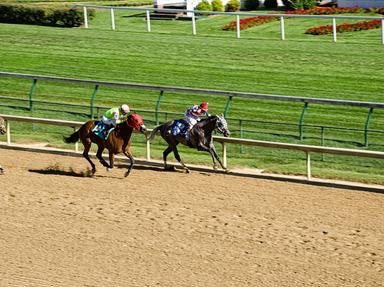Quiz Answer Key and Fun Facts
1. The first winner of the Triple Crown won in 1919 (before it was called the Triple Crown).
2. The twelfth winner of the Triple Crown, in 2015, was the first to attain the Crown in the 21st century, after a 37-year drought.
3. The 1937 winner of the Triple Crown (the fourth to take it) was the son of champion Man o' War, and Seabiscuit's nemesis besides.
4. The lucky 13th winner of the Triple Crown, in 2018, was the first to sweep the Crown without racing as a two-year-old.
5. The second winner of the Triple Crown dashed to victory in 1930.
6. The winner of the 1935 Triple Crown was the son of the previous Triple Crown champion.
7. The 1977 Triple Crown champion (the tenth) was the first undefeated horse to win the Crown.
8. The eighth winner of the Triple Crown, in 1948, would be the last for the next quarter of a century.
9. The eleventh winner of the Triple Crown was the last to earn the Crown in the 20th century (in 1978).
10. The record-breaking Triple Crown champion of 1973 has no equal.
Source: Author
gracious1
This quiz was reviewed by FunTrivia editor
gtho4 before going online.
Any errors found in FunTrivia content are routinely corrected through our feedback system.
